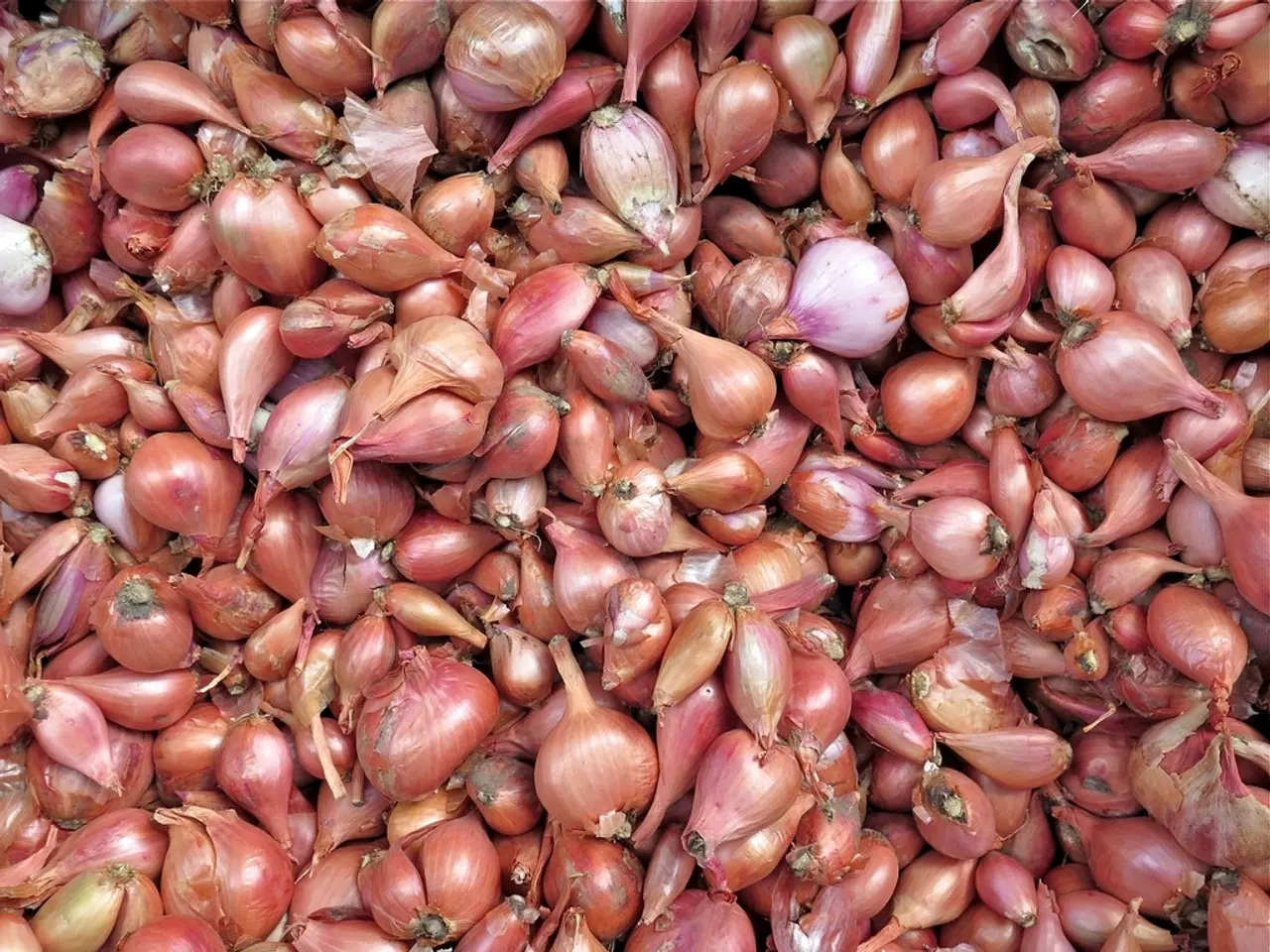The Process of Growing Onions: Exploration of Growth Phases and Cultivation Advice
Growing Onions: Expert Tips for a Bountiful Harvest
Growing onions requires careful consideration of the type of onion and the day-length characteristics of your climate. Here are some best practices for growing onions, based on the three types of onions: long-day, short-day, and day-neutral (intermediate-day) onions.
Day-Length Types and Climate Suitability:
- Long-Day Onions: Requiring at least 14 hours of daylight to form bulbs, long-day onions are best suited for cooler, northern regions with long summer days. They are typically planted in the spring and harvested in late summer. Not recommended for southern regions because they won’t get enough daylight to form large bulbs.
- Short-Day Onions: Ideal for southern regions with mild winters, short-day onions require about 12 hours of daylight for bulb formation. Usually planted in the fall to overwinter and form bulbs in spring as days lengthen, they perform poorly in northern regions because they bulb too early and produce small bulbs.
- Day-Neutral (Intermediate-Day) Onions: Requiring 12 to 14 hours of daylight, day-neutral onions are versatile for most zones except extreme southern areas like south Florida and south Texas. They can be adapted to varied weather conditions with flexible planting times.
General Best Practices Across Climates:
- Soil: Onions prefer well-drained soil with a pH of 6.0 to 6.5. Limestone or dolomitic lime may be needed to adjust acidic soils, but this should be done months before planting.
- Fertilization: Nitrogen rates depend on soil type; for example, 100-130 lb/acre nitrogen on Coastal Plain soils and 90-120 lb/acre on Piedmont soils, with appropriate phosphorus and potassium based on soil tests. Boron (1 lb/acre) and sulfur (20-40 lb/acre) are important, especially on sandy soils.
- Planting: Using transplants is common, especially in cooler climates. Transplanting times depend on the onion type and location; for short-day onions in the southeast U.S., transplants are set in November-December for best results. Onions grown from sets should be planted 1 inch deep and spaced 1-3 inches apart, thinning to 3-4 inches for mature bulbs.
- Mulching and Pest Management: Mulch deeply (up to 8") in cold climates to protect roots and conserve moisture, but mulch lightly in milder climates. Avoid planting where alliums have grown recently (at least two years) to reduce fungal diseases. Use barriers or traps against pests like gophers.
- Spacing: Rows should be 18–24 inches apart or 12 inches apart for commercial double-row plantings on raised beds about 20 inches wide.
These practices should be adjusted considering your local climate and onion variety to optimize bulb size and yield.
In summary, choose your onion variety based on day length suited to your region, prepare well-drained and nutrient-appropriate soil, plant at recommended times and depths, and manage pests and diseases properly for the best onion harvest in any climate.
Larry Meyers, a gardening expert with over 10 years of experience, aims to share his knowledge about gardening and create a one-stop shop for all gardening information and needs. To plant a sprouted onion, the dry outer layers are gently peeled away, and the bulb is nestled into rich soil. A balanced fertilizer early on fuels leaf and root development, while a nitrogen-rich feed supports vigorous growth later. Onions need a well-drained spot with plenty of sunlight, at least 6 hours of direct sunlight. Onions are ready for harvest when their tops begin to fall over and turn brown. After curing, store onions in a cool, dark place in mesh bags for several months. For a successful garden, the soil should be rich in organic matter, loose, and not compacted, with a slightly acidic to neutral pH (6.0-7.0).
- Incorporating cooking with fresh home-grown onions can enhance a food-and-drink lifestyle, as growing onions at home provides a connection to the source of one's food.
- A home-and-garden lifestyle can benefit from a variety of recipes incorporating onions, as bountiful harvests of different types of onions offer diverse flavors and textures suitable for many culinary applications.
- A well-maintained and productive garden that includes a selection of onion types can contribute positively to a sustainable food-and-drink lifestyle, reducing reliance on store-bought produce while providing a bountiful supply of fresh ingredients for a variety of meals and recipes.




